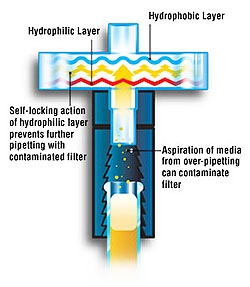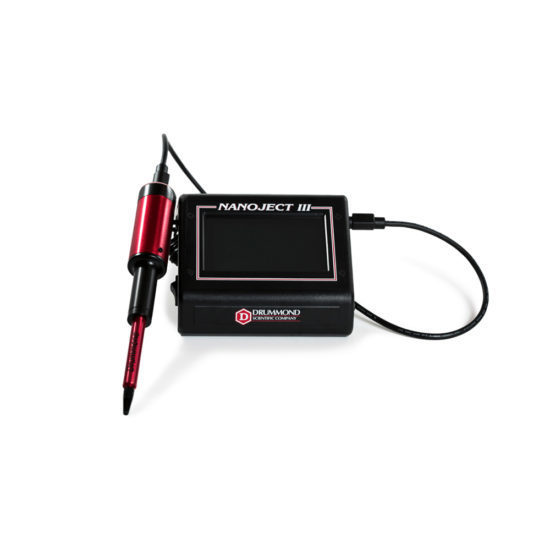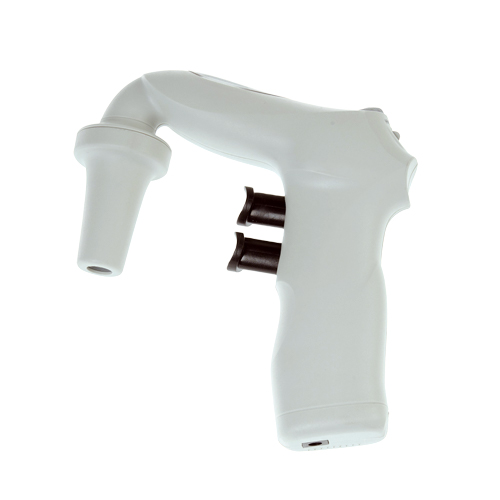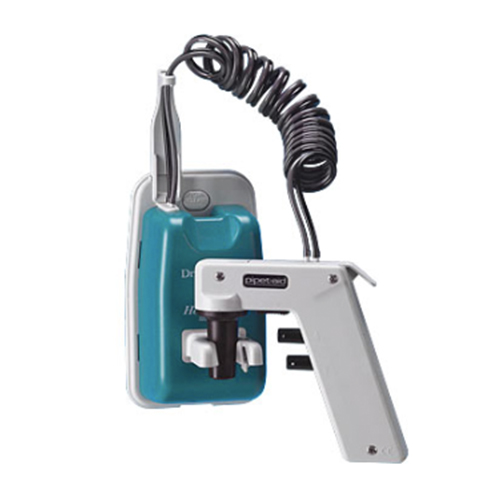Why use a Drummond Self-Locking Filter in Your Pipet-Aid?
In order to provide a fail-safe, one-time check valve for Pipet-Aid pipettors, Drummond pioneered the use of a “self-locking” dual-layer filter. It’s composed of one hydrophobic membrane and one hydrophilic membrane located in the nosepiece. With a dual-layer membrane, when the filter is challenged with an aqueous solution, the hydrophobic layer prevents liquid from entering the handle. The wetted hydrophilic layer restricts the flow of air which locks the Pipet-Aid from further use. When this happens, the user must replace the filter and clean the other wetted parts, thus protecting the Pipet-Aid as well as the integrity of subsequent dispensings.
The specifications for the Drummond filter are .8 µm for the hydrophilic layer and .8 µm for the hydrophobic layer. Most competitive pipetting units use a single layer hydrophobic membrane filter with ratings of either .22 µm and .45 µm. These filters protect the handle only.
If challenged with an aqueous solution, the filter will prevent the liquid from entering the handle. However, it can be subsequently blown out and pipetting can be continued. This action creates an aerosol generator just above the pipet and all subsequent dispensings are at risk of being contaminated. While the user may think he or she is sterilizing the air entering the pipet, they are in fact introducing contamination.
The most effective safety measure to prevent contamination is the cotton or fiber plug in each pipet. Even if a sterile filter is installed in a Pipet-Aid, the first time an aerosol comes in contact with the bottom membrane, the filter is rendered forever non-sterile.
The only thing that prevents this from happening is the plug in the pipet itself which prevents aerosols from leaving the pipet and prevents them from entering. Drummond “self-locking” filters are supplied non-sterile because we believe there is no effective and practical method to maintain sterility in these devices.
Share this post

Looking to join our team of passionate innovators?





